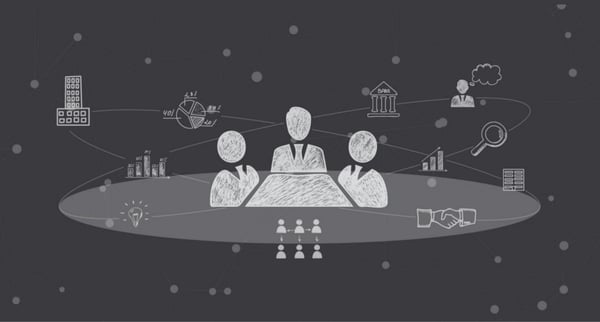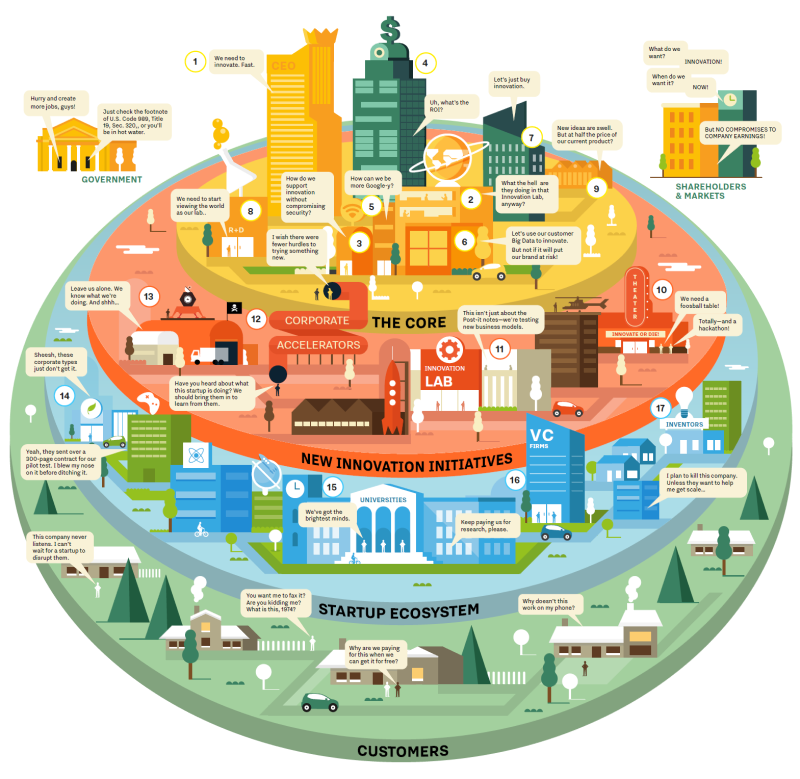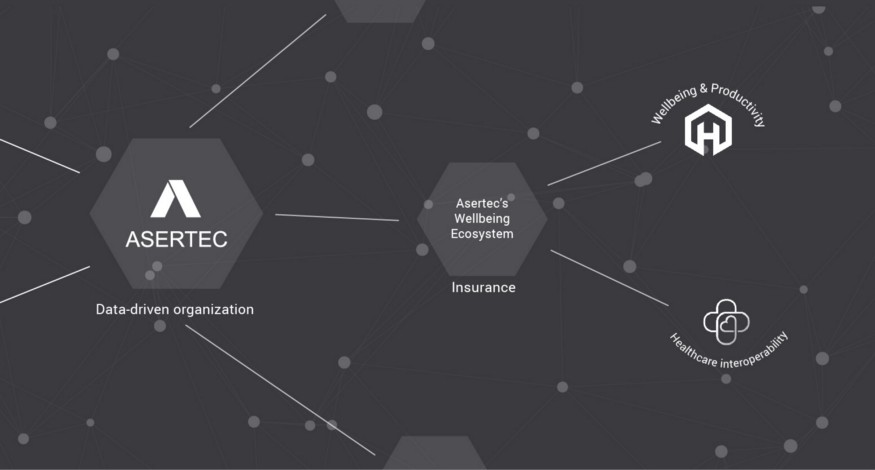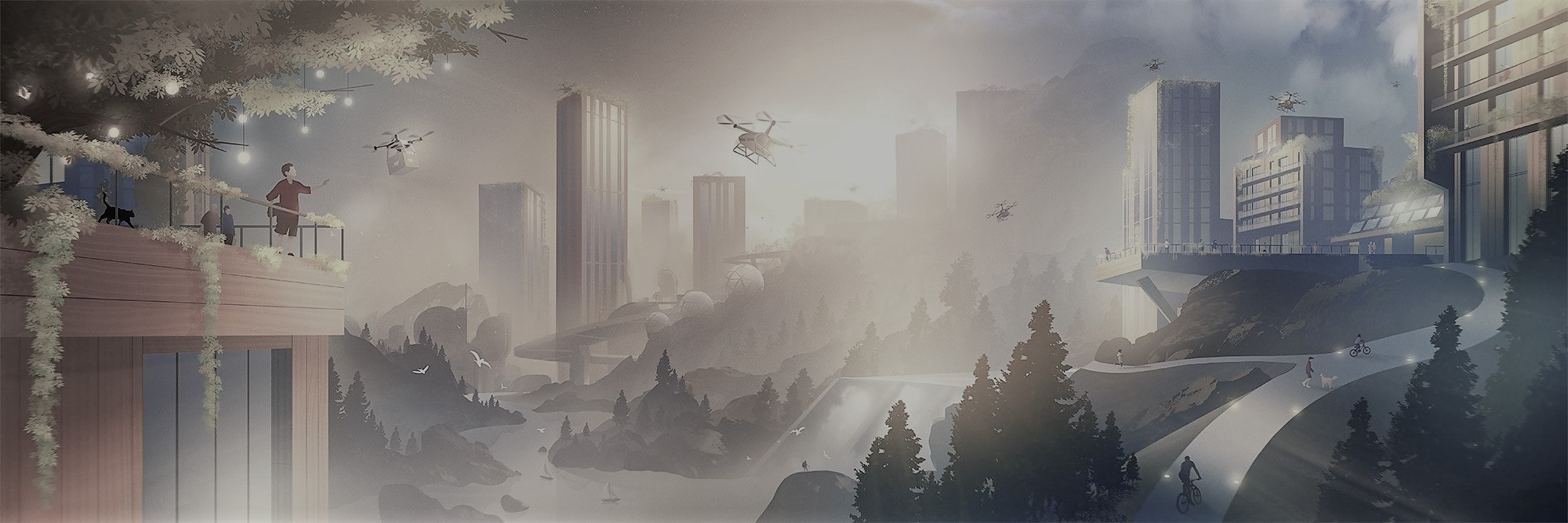Ecosystem-Augmented Organizations
In nature, ecosystems and life are inseparable. Ecosystems create the space where life thrives, and the life that inhabits it replenishes and enriches the ecosystem. Both occur naturally together.
 Illustration 1, Ecosystem-Augmented Organizations (illustration by Julio blog)
Illustration 1, Ecosystem-Augmented Organizations (illustration by Julio blog)
There are also human ecosystems, where people are brought together into communities, society. Inadvertently, organizations have also created ecosystems around their value chain. Now we are starting to see, though, an emergence of organizations that recognize the power of intentionally building and harnessing the power of ecosystems.
As companies connect with their purpose, different questions begin to arise. The migration from shareholder to stakeholder value within a larger context transformed the conversation of value creation. How is value created in a purpose-driven world? What’s the point of competition? The boundaries of competition and industry become irrelevant because now organizations and the contributors that make them can see a world of tools and resources to pursue that purpose and impact their clients and society. Income becomes a resource and byproduct of value creation. Rather than an end, it is the currency that symbolizes the appreciation of value exchange. Even the relationship between businesses and their client is changing. It is both a means and an end to accomplish the goal for the individual and the collective.
Reid Hoffman, former co-founder and executive chairman of LinkedIn, in his Masters of Scale podcast, refers to the purpose behind the purpose. It is common to see organizations built around their client’s needs, but many now have made it clear they serve a higher purpose for society, expressed through their interactions with their clients and built over time. For the most part, business ecosystems serve both the purpose and meta-purpose. One, or both, are entirely centered around people, perhaps with few exceptions. We believe ecosystems, too, should be designed around the clients who are seeking to fulfill the entirety of their related needs. The customer wants a seamless experience from service to service, and with few exceptions, this means going across an intersection of providers. Each of the customer-facing companies is in turn connected to a mesh of entities along their value chain.
 Illustration 2 — Source: XPLANE Corporate Innovation Ecosystem
Illustration 2 — Source: XPLANE Corporate Innovation Ecosystem
Ecosystems come in many shapes and sizes. Above, we see what could be an expanded corporate innovation ecosystem that has many players. Yet, there are other examples, such as what we see with the consolidation of many companies across all industries. Behemoths like Luxottica work within an ecosystem of designers and brands. If you wear glasses or sunglasses, you are most likely using a pair manufactured and distributed by Luxottica. The brand name that is on your frames is probably Oakley, Prada, Gucci, or others. Both coexist as an ecosystem of design, brand, and manufacturing capabilities. Look at the experience of running a Google search and opening a website. You will find that, for example, the ads served and other technologies on the site are Google products. These giants have created ecosystems within their corporate walls and through joint ventures and partnerships. These systems have grown to the extent that some industries are under heavy scrutiny by anti-trust regulators.
We also find simple ecosystems, either as a starting point or permanently if it serves the customer as desired. The following example illustrates how an organization might dip its toes to explore how it can benefit from developing an ecosystem of its own in response to a changing landscape. Asertec has a clear sense of purpose, trying to address wellbeing. From that point, the organization views the problem from different angles. With this strategy, they try to determine ways to serve their customer more broadly, anticipating the changes in their landscape.
Example: Asertec — Asesores de Seguros (Ecuadorian brokerage insurance company).
Aware that insurers are on the brink of disruption or becoming the disruptors, the company has started executing a business ecosystem strategy. They recognize that convergence of the industry is inevitable: insurance, technology, and other complementary and non-complementary industries. The most recent innovation is happening in health and life insurance. The value proposition is not just advising and protecting the customers with coverage policies. It is also on helping them to stay healthy through different mechanisms. The company has partnered with habits.ai (a B2B platform for wellbeing and productivity) and goctors.com (an integrated health management platform) to achieve the mission of keeping their customers healthy. The philosophy behind this initiative is to strategically expand the company towards other industries such as technology and wellbeing more broadly through collaboration and co-creation, partnering with the best actors (startups and organizations) of the ecosystem.
 Illustration 3— Asertec´s Wellbeing Ecosystem
Illustration 3— Asertec´s Wellbeing Ecosystem
Ecosystems require a lot of work, no matter their size. It means entering a human-centered design process focused on the customer, identifying and understanding how they currently serve their needs. The organization must then visualize the systems involved, ideating new solutions that add value. To achieve this, it might mean creating new products or services, connecting them with other providers, even founding or funding new ventures to fill any voids.
So, is this for you? We believe that organizations that want to survive in the future will need to either lead or be part of an ecosystem. The large multinational organizations are and will continue to create massive ecosystems. Competing against them on your own may only be possible if you are serving a niche or micro-niche, meaning growth will always be limited, and you will always be vulnerable. In addition, the depth of customization and breadth that customers seek will be impossible to address by individual companies. Ultimately, we believe that customers want increasingly seamless, hassle-free options to solve their problems, and ecosystems are perhaps the most effective way to accomplish this. If your organization is purpose-driven and customer-centric, this may be the most powerful way to create the impact you seek.
“A distinctive characteristic of many ecosystems is that they form to achieve something together that lies beyond the effective scope and capabilities of any individual actor (or even group of broadly similar actors)". — Deloitte University Press
Part 1 — Reflections
- Where is your company in the current ecosystem?
- Who needs to be part of your ecosystem?
- How strong are network effects in your ecosystem?
Have a creative week! To-the-top
(You can find the original content @ JCG's Medium channel)
Share this
You May Also Like
These Related Stories
.png)
11 Booming Digital Revenue Models

Rethinking The Future


No Comments Yet
Let us know what you think